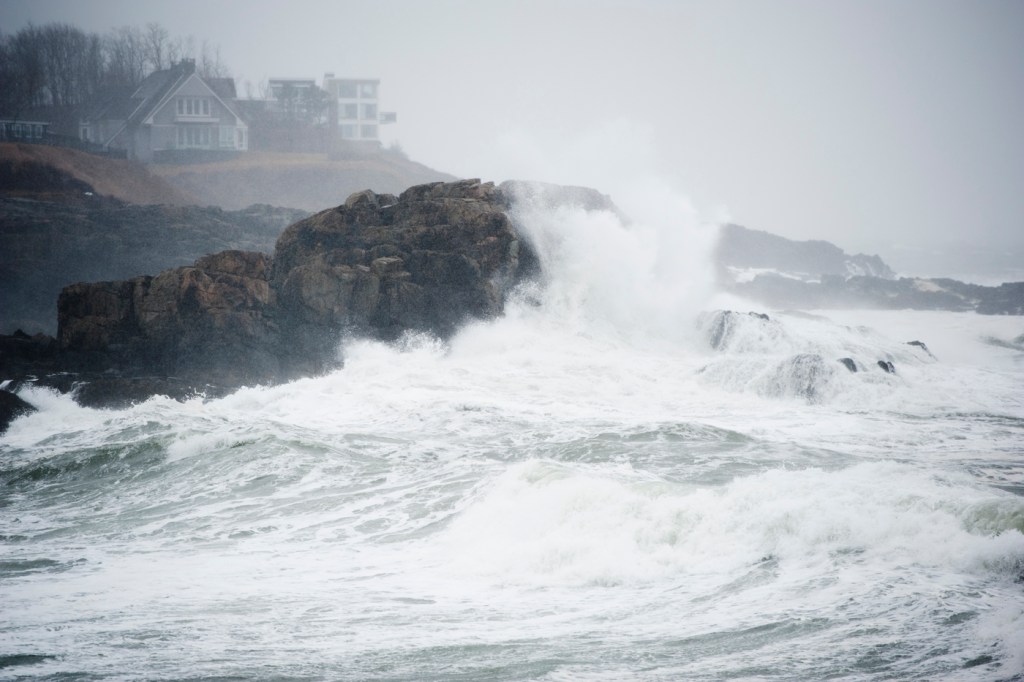Looking ahead: Coastal sustainability in 2015

 Coastal erosion, rising sea levels, fishery issues, and invasive species are some of the major issues facing urban coastal sustainability this year. But these aren’t new problems, says Northeastern University’s Marine Science Center Director Geoff Trussell.
Coastal erosion, rising sea levels, fishery issues, and invasive species are some of the major issues facing urban coastal sustainability this year. But these aren’t new problems, says Northeastern University’s Marine Science Center Director Geoff Trussell.
Here, Trussell, the chair of the Department of Marine and Environmental Sciences, expands on these issues and how experts might address them in 2015.
What new advancements can we expect in the field of coastal sustainability in 2015? What are experts and researchers most focused on?
In New England, I think fishery issues are going to continue to be at the forefront of the dialogue. There have been new quotas released by the National Oceanic and Atmospheric Administration in terms of harvest limits in the Gulf of Maine for a variety of different species, including haddock and cod. Being able to manage fishery stocks that are environmentally, economically, and socially viable is going to be very important. I also think that we need to spend more time thinking about how mariculture can assume a more prominent and sustainable role in our fisheries economy.
I think coastal erosion and rising sea levels are also going to continue to be big issues in 2015. This is particularly true for places like Cape Cod and the Islands. Even though the sea level projections aren’t going to have an impact for some time, it’s an inexorable reality that we are going to have to deal with sooner than later. Just imagine how even more devastating the impacts of Superstorm Sandy or the recent blizzard would be with elevated sea levels.
The interesting thing is these are not new problems.
Do you foresee anyone coming up with solutions this year for any of these issues?
For something like invasive species, which continues to be an area of concern, it’s not so much are we going to be able to stop it, but can we gain a better understanding of what the impacts will be. Obviously there can be better regulations but the bottom line is the spread of invasive species is increasing.
With coastal erosion, it is possible engineers are going to come up with some solutions that can help reduce impacts. However, we must achieve a better balance between gray (sea walls and shoreline armoring) and green infrastructure (oyster reefs, salt marshes), the latter of which provides other key ecosystem services (e.g., nutrient cycling, nursery habitat) in addition to buffering of erosion. One of the reasons Superstorm Sandy had such a big impact is because we have replaced natural habitats like marshes, which absorb storm surge, with commercial and residential developments.
Rising sea levels I don’t really see changing. I think the focus is going to be more on how do we adapt.
With all these problems, we need to increase understanding and then implement effective solutions. Efforts like the city of Boston’s recently announced Climate Action Plan will certainly help move us in the right direction. The big challenge, which our Urban Coastal Sustainability Initiative seeks to address, is bringing together interdisciplinary frameworks and collaborations that draw upon science, engineering, social science, law and policy, and environmental economics to create new knowledge and develop effective, sustainable solutions that address the critical issues facing coastal communities.
Are there any new research projects at the Marine Science Center that reflect new trends in coastal sustainability?
Professors Mark Patterson and Brian Helmuth have started a preliminary project looking at tide gates in Massachusetts. Tide gates regulate the flow of water in and out of salt marshes. Under normal conditions, you want the tide gate to be open so during high tide, salt water can come into the marsh ecosystems and maintain the natural dynamic of brackish water that supports the diverse assemblage of plants and other species that rely on these marsh habitats.
Unfortunately, in a number of instances these tide gates remain permanently closed because people living on the coast are worried about flooding. As a result, the health and functioning of the ecosystem collapses. We need to find a better approach that protects coastal property but also maintains the environmental health of these key habitats. Mark and Brian are trying to develop a new system where the tide gate could be controlled remotely and would have sensors that monitor the water quality in the marshes.